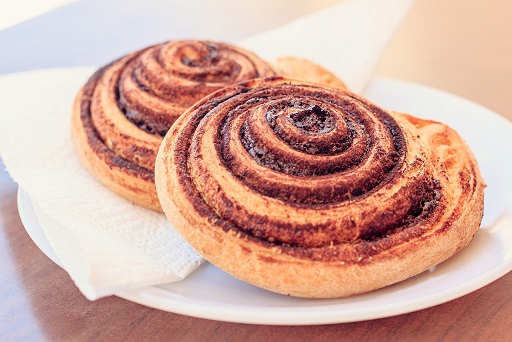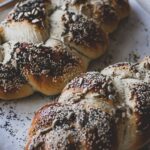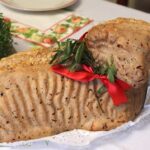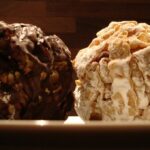
Franzbrötchen is Hamburg’s famous cinnamon pastry, known for its buttery, flaky texture and caramelized cinnamon-sugar filling. Resembling a mix between a croissant and a cinnamon roll, this treat is enjoyed for breakfast or as an afternoon snack with coffee.
Bakers achieve its distinctive spiral shape by rolling and flattening the dough, creating crispy edges and soft layers inside. While the classic version is filled with cinnamon and sugar, variations include chocolate, marzipan, or nut fillings.
This guide explores the history of Franzbrötchen, its significance in northern German baking, and a simple step-by-step recipe to make it at home.
History & Cultural Significance
The Origins of Franzbrötchen
Franzbrötchen originated in Hamburg in the early 19th century, influenced by the city’s historical connections with French cuisine. It is believed that French troops, stationed in Hamburg during the Napoleonic era, introduced croissants, which inspired local bakers to create their own version with cinnamon and sugar.
Today, Franzbrötchen is a signature pastry in northern Germany, found in nearly every bakery in Hamburg. Some variations include streusel toppings, chocolate drizzles, or crushed nuts.
Want to explore more German pastries? Check out Vanillekipferl and Quarkhasen.
Ingredients & Preparation
Ingredients
For the Dough:
- 500g (4 cups) all-purpose flour
- 250ml (1 cup) warm milk
- 75g (⅓ cup) sugar
- 1 packet (7g) dry yeast
- 80g (⅓ cup) unsalted butter, melted
- 1 egg
- ½ tsp salt
For the Filling:
- 100g (½ cup) unsalted butter, softened
- 100g (½ cup) sugar
- 1 tbsp cinnamon
For Brushing:
- 1 egg yolk mixed with 1 tbsp milk
How to Make Franzbrötchen
Step 1: Prepare the Dough
- Dissolve yeast and sugar in warm milk, let sit for 10 minutes.
- In a large bowl, combine flour and salt.
- Add melted butter, egg, and yeast mixture.
- Knead into a smooth dough and let rise for 1 hour, or until doubled in size.
Step 2: Roll and Fill
- Roll the dough into a rectangular shape (about ½ cm thick).
- Spread softened butter evenly over the surface.
- Mix sugar and cinnamon, then sprinkle it over the buttered dough.
- Roll the dough tightly into a log from the long side.
Step 3: Shape the Franzbrötchen
- Cut the log into 4-5 cm wide pieces.
- Using a wooden spoon, press firmly in the center of each piece to create the classic Franzbrötchen shape.
Step 4: Bake
- Preheat oven to 180°C (350°F).
- Place pastries on a lined baking sheet and brush with egg wash.
- Bake for 20-25 minutes until golden brown.
Serving Suggestions & Variations
How to Serve
Franzbrötchen are best enjoyed fresh, served with:
- A cup of coffee or black tea
- A dusting of powdered sugar for extra sweetness
- Warm butter or jam on the side
Variations
In Hamburg, some bakeries add streusel topping or chocolate chips. In Berlin, a marzipan-filled version is popular. Some home bakers also drizzle melted chocolate over the top for a modern twist.
Want to try another German sweet pastry? Check out Vanillekipferl.
Franzbrötchen are a buttery, cinnamon-filled delight, making them a perfect treat for breakfast or an afternoon snack. Their crispy edges and soft, flaky layers make them a must-try for anyone who loves German pastries.
Looking for more traditional recipes? Try Schokoladenhasen, Marzipan-Eier, or Rüblikuchen.







